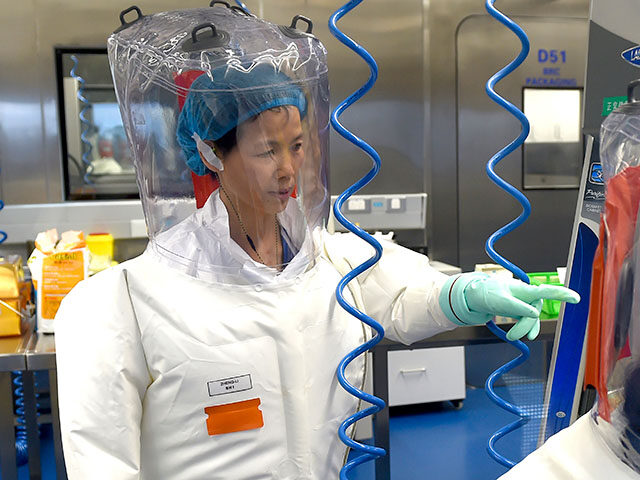China’s “Bat Lady” Shi Zhengli, a leading researcher from the Wuhan Institute of Virology whose work may have played a role in the murky origins of the coronavirus pandemic, is back to conducting coronavirus research in partnership with Western scientists, including from the University of Washington.
Shi’s latest project is the creation of a custom coronavirus receptor, the molecule that helps a virus bind to cells in its host organism.
Shi and a team of international research colleagues recently published an article in Nature describing their development of artificially designed receptors, which would provide a “modular” system for introducing viruses into host organisms much more quickly and efficiently than relying upon existing “natural” receptors. The scientists compared their approach to using “Lego blocks” to construct a receptor system that perfectly matches the incoming virus payload.
They used SARS-CoV-2 as their research model.
The goal of the project, as summarized by Wuhan University, is to “break bottlenecks in virology research, promoting foundational studies on viral infection mechanisms and aiding vaccine and antiviral drug development.”
“Our findings provide a foundation for the design of viral infection models for difficult-to-culture coronaviruses and other viruses, and will facilitate further advances in basic research on various infectious diseases and accelerate the rapid development of countermeasures for the benefit of public health worldwide,” the research team said.
The basic idea is to create perfectly matched receptor systems so scientists can study the coronavirus infection process under laboratory conditions, without the hit-or-miss factor introduced by random receptors. In theory, this can help scientists gain a better understanding of both coronavirus and the mechanism by which they infect both animals and humans.
No one involved with the project seems to think the public might be alarmed by scientists creating a perfect modular delivery system for the coronavirus that shut down the entire world, in cooperation with the “bat lady” who might have helped to unleash the worldwide pandemic.
One theory of the Wuhan coronavirus’s origins was that samples collected from bats by Shi and her team brought the SARS-CoV-2 virus to the Wuhan Institute of Virology (WIV), from which it escaped into the human population of the enormous city of Wuhan. Another is that some of Shi’s researchers were infected while working with bats in some obscure caves elsewhere in China.
Shi has always maintained she was only interested in performing benevolent medical research. She warned in 2023 that it is “almost certain” there will be another global coronavirus pandemic, unless more preventive research is conducted.

COMMENTS
Please let us know if you're having issues with commenting.